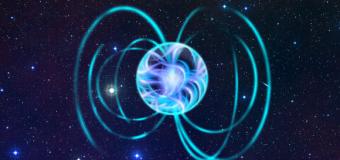15/10/2010
An article by faculty member Ersin Göğüş concerning his work on neutron stars was published in Science, one of the world’s most prestigious scientific publications.
The work conducted by an international team of which Göğüş is a member observed that a neutron star with a relatively weak outer magnetic field can still cause bursts of X and gamma rays. This discovery illustrates that the inner magnetic field of the star can be much more powerful than an outer magnetic field that is insufficient to cause bursts. Considering that one of the strongest magnetic fields obtained on Earth is emitted by an MR device and the magnetic fields of neutron stars are approximately 100 billion times stronger, it is not surprising that scientists are very excited about this discovery. Bursts on these stars, which serve as natural laboratories for scientists, help them observe how intense magnetic fields interact with matter in nature.

The Milky Way galaxy is comprised of more than 100 billion heavenly bodies, including Earth, the sun and the moon. Despite so many heavenly bodies, there are only two thousand neutron stars in the known Milky Way. Matter is in its densest form in neutron stars, and these bodies have immensely powerful magnetic fields. Even the weakest of these stars have 10 thousand times that of the sun’s power of attraction. Until last March, astrophysicists were only aware of 6 such neutron stars. As the most powerful magnets in the universe, an explosion on a neutron star only lasts about one-tenth of a second. In this very short interval, the star radiates energy that is almost equal to the energy radiated by the sun in a year. Last March, a team led by Sabancı University faculty member Ersin Göğüş had discovered the 7th neutron star possessing these properties. Now, they observe the X and gamma rays emitted by a neutron star estimated to be six thousand light years away as part of an observation project endorsed by the NASA.




